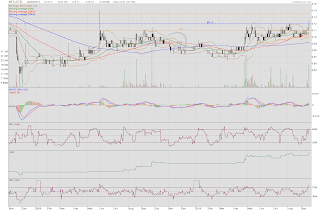The title of this blog post is exactly the same as the title of an email sent to me by a reader, Paul. I like how it neatly encapsulates his good intention with a dash of cheekiness. I try not to take myself too seriously most of the time. Haha... I have reproduced his email with his permission:
Ways to Boost National Income
As we have learnt in basic economic theory, C+I+G+(X-M)=Y, I will now discuss issues which are restricting the major economies such as US and the EU to grow, and some of the policies which have been undertaken by them.
C stands for domestic consumption. In recessions, consumption is usually hit badly. As the consumers are busy deleveraging to pay off their debts, they cut down on their income elastic consumption which is normally the luxury goods.
I stands for investments, aka private sector. During recessions, there is a lack of incentives for investment by the private sector due to excess capacity therein. Furthermore, margins could thin due to lack of pricing power in times of recession. In addition, due to consumers deleveraging, there could be a lack of demand from consumers.
G stands for government spending. In normal recessions, a country's government is able to execute expansionary fiscal policies through spending in sectors such as infrastructure, education, health or military. These deficits could be financed by previous budget surpluses (which many of these big countries do not have), or borrowings through issuance of government bonds. Most countries adopt the issuance of government bonds approach to finance their government spending. However, as mentioned in an earlier post, governments in major economics like the UK, Japan and the USA have been incurring budget deficits for the past few years, which limit their ability to borrow more money. In the case of the US, the government debt is expected to double over the next decades, with majority of the debt caused by interest payment. The austerity program adopted by the major economies limit the governments' ability to prop up growth.
(X-M) is net export. One of the most basic ways to boost the (X-M) component is to have a weaker currency, which would make a country's exports relatively cheaper compared to other countries. Currently, governments worldwide are turning to this as a solution. Instead of focusing on productivity to boost exports, governments take the easy way out, by “manipulating” the strength of their currencies. For example, USA forced the revaluation of the Japanese Yen in 1985 to boost their exports. Currently, USA is trying to do the same to the Chinese RMB.
In this world, there is never a case of a balanced trade accounts, there will always be imbalances, some countries having surpluses, some having deficits. Trade account surpluses and deficits are not a problem in economic studies. But for political reasons, it has been a problem. Recently, Japan central bank also intervened in the FOREX market to weaken the yen. This has led to what is called "competitive devaluation", a race to the bottom, where countries will try to make their currencies relatively weaker to boost exports.
Another method to boost (X-M) is the implementation of trade barriers, which would again result in trade wars. Already, there are signs of protectionist measures in the USA through the “Buy Made in US” campaign. Trade wars would hamper global economic growth, especially those of emerging markets which are reliant on exports.
When there is a recession caused by a financial crisis, it takes longer than usual to recover due to the freeze in credit lines and financial system. Actually, US is doing comparatively better than the recovery from previous financial crisis led recession.
In the case of Singapore, we are fortunate enough to have a good public financial system. Any sales of Singapore assets such as land are being kept in the “treasury” under the care of the President and not the government. 50% of the returns from investments such as those from GICs are also channeled into this “treasury”.
Hence, when the Singapore government want to tap into this reserve in 2008 or 2009, it had to seek permission from the President. The budget surpluses which are usually stated by the government, do not include the increase in the reserve funds. Therefore, “short term pain, long term gain” has served Singapore well in saving for the rainy days and having the fiscal policies to help the economy. Most western economies do not have this privilege due to the asymmetrical nature of fiscal policies. Easy to cut taxes, hard to raise taxes, which sort of validate Singapore government's stand on retaining the GST even during the economic hard times.
Related post:
USA, a rock and a hard place: Paul opines.


































